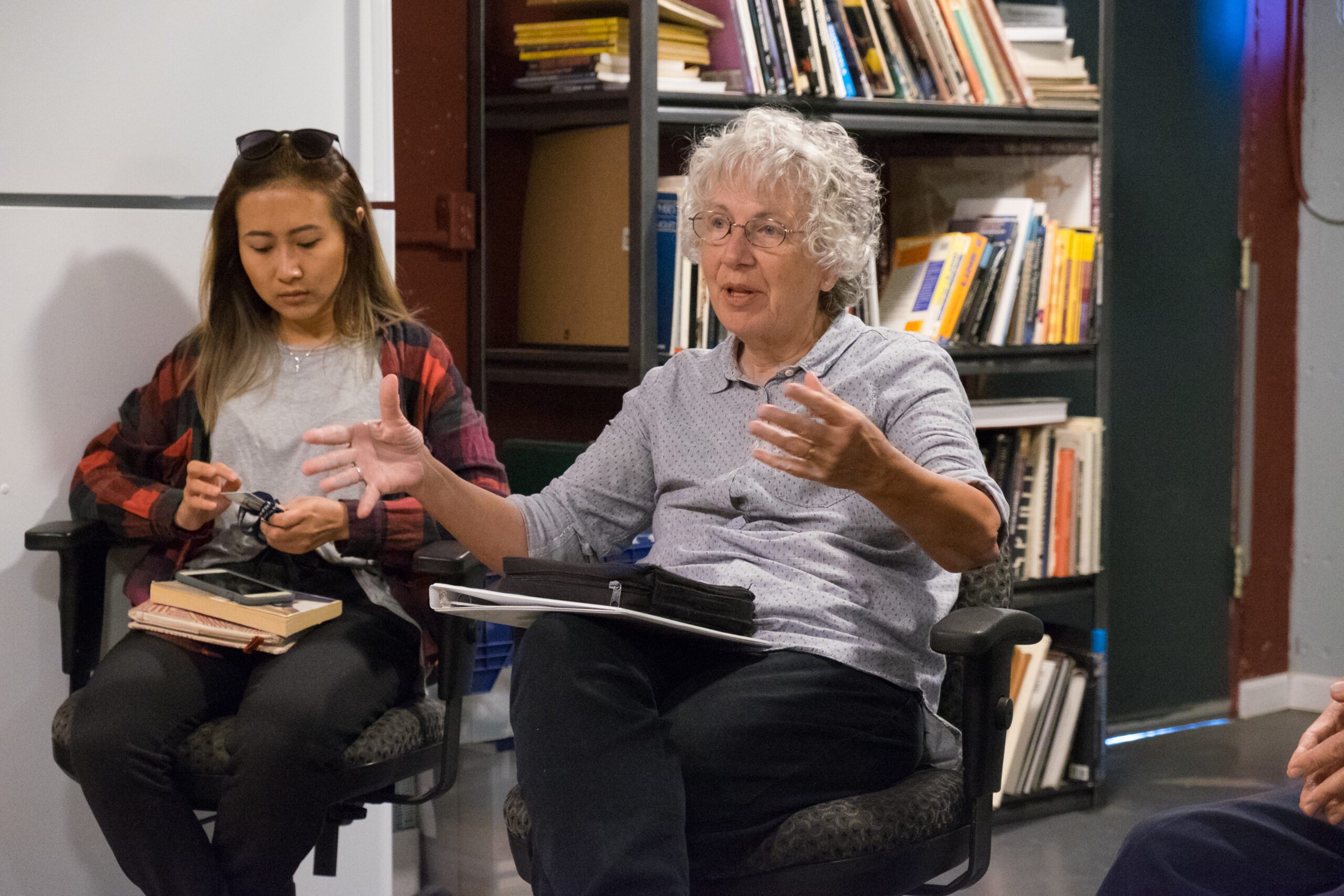This is Jo Fahringer who is a seasoned teacher in Kona, Hawaii with YWAM. [X-E2, XF18-55mmF2.8-4 R LM OIS, Mode = Aperture Priority, ISO 6400, 1/70, ƒ/5, (35mm = 83)]
Just the other day, I talked about this rule of communicating. The 7-38-55 rule is a concept concerning the communication of emotions. The rule states that 7 percent of meaning is conveyed through spoken word, 38 percent through tone of voice, and 55 percent through body language.
Now I work hard to see these gestures and listen for tone and word choices when photographing.
Time for 180º
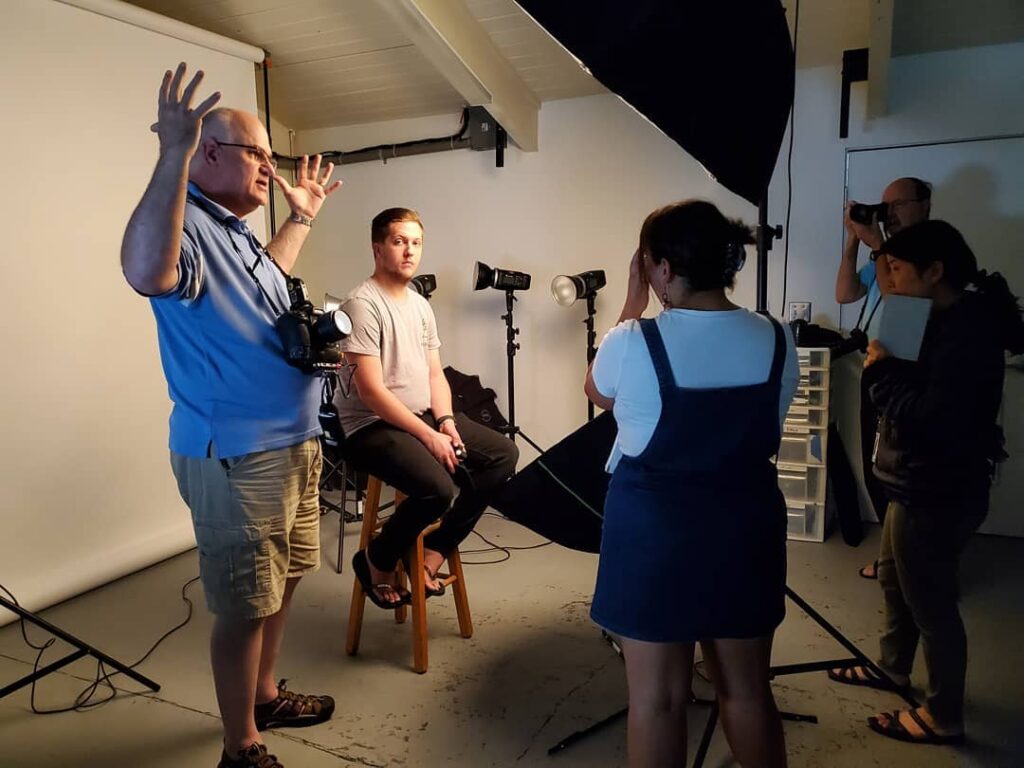
I want to say right away that I am a lot better at watching and listening than I am with how I come across to others.
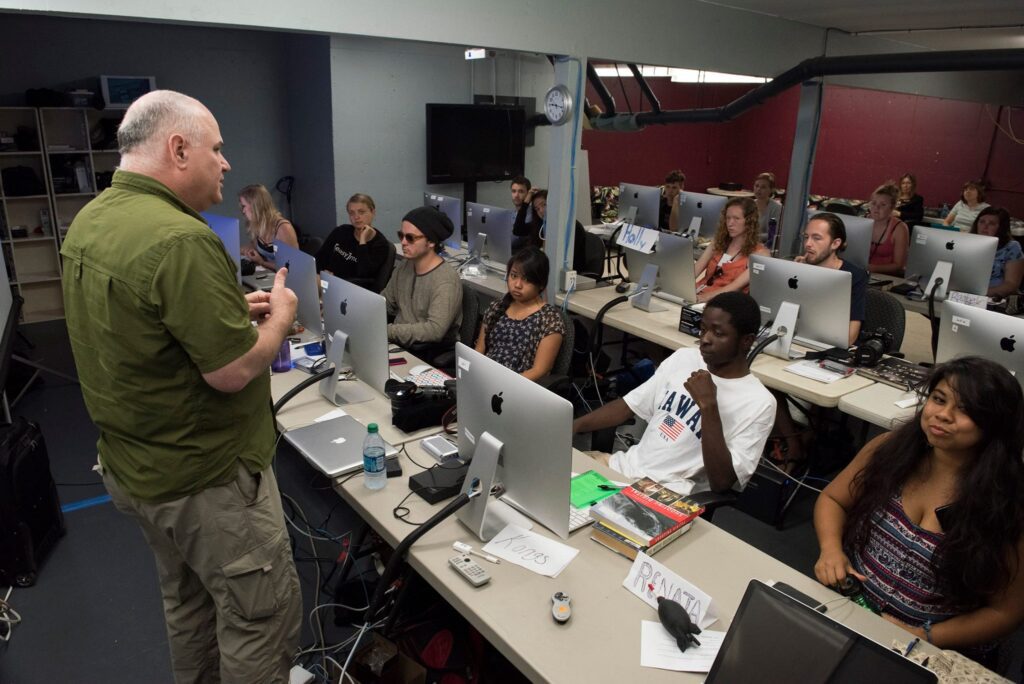
Speech difficulties, such as a lack of rhythm, an odd inflection, or monotone pitch, often affect children and adults with Asperger syndrome, which I have. Frequently they cannot modulate the volume of their voice according to their surroundings, so you’ll sometimes hear them being very loud in places like churches or a library.
Right away, I struggle with the 38% tone of my voice in communicating. To make up for it, I often ask, “Does that make sense?” I know I have a problem and work hard to see if my message is clear and not lose anything.
People with Aspergers will gather enormous amounts of factual information about their favorite subject. They will talk incessantly about it, but the conversation may seem like a random collection of facts or statistics, with little or no point or conclusion. They may attempt to befriend or socialize with other people but make normal conversation difficult by eccentric behaviors or wanting only to talk about their particular interests.
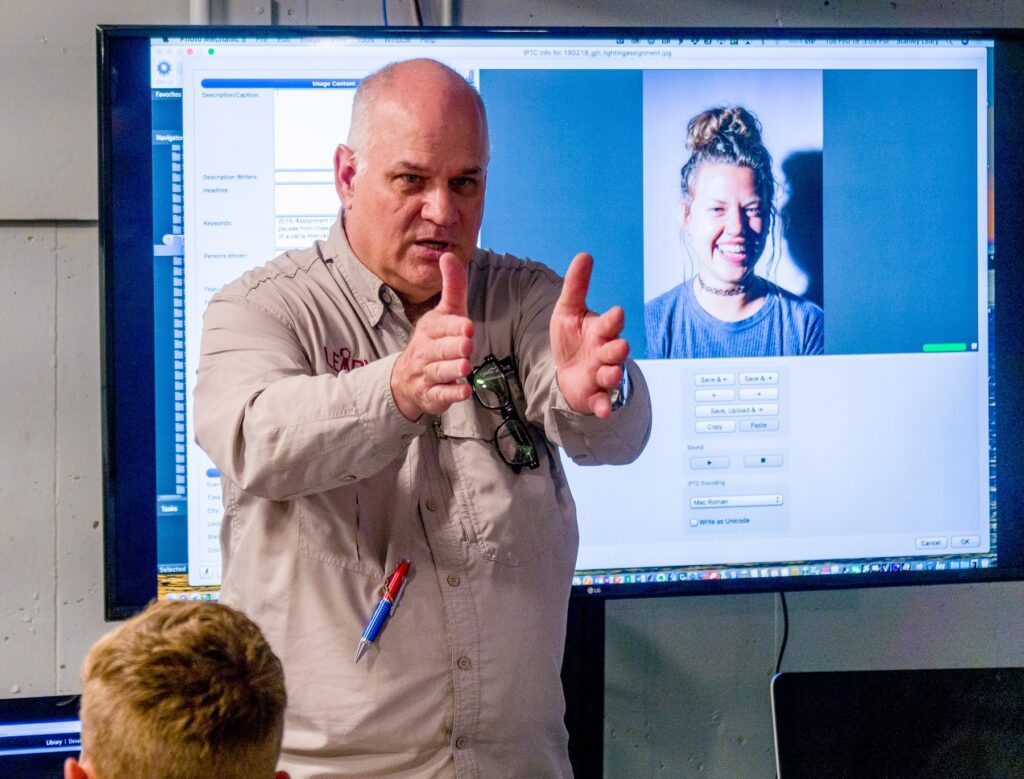
Over the years, I have become quieter in mixed groups because I know if I am not careful, I will talk about what is important to me and not aware that others don’t care.
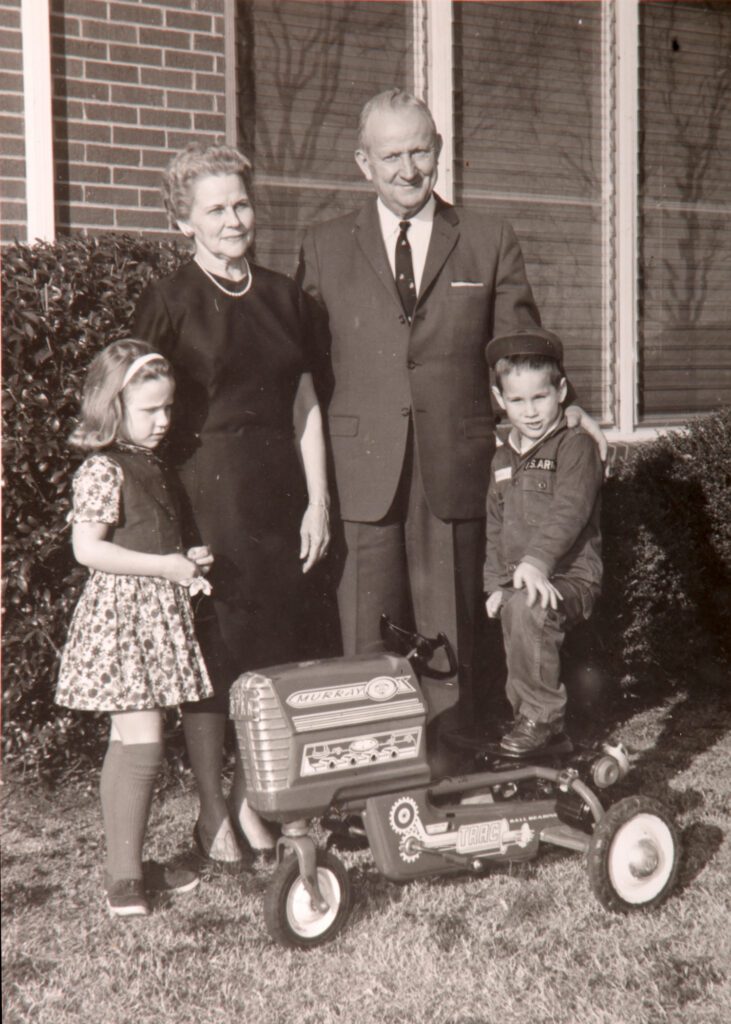
I was almost always seen playing GI Joe and riding my tractor when I was young. I did this ALL THE TIME. I think it was easier for my family to let me go and play than to try to get me to have other interests.
Today I have a few topics I have spent far more time understanding than the average person.
When I am in the midst of thought, it is almost super crucial that I finish it. It is mainly because if we move on and I don’t finish it, I will not remember later what I was thinking, which can make me beat myself up. The problem with this is then the conversation is all about me finishing my thoughts.
When you speak, you hear yourself very differently from how others listen to you. This is because the sound waves travel through your head to your ears, where they are detected.
If you record your voice and listen to it, you will hear your voice very close to what everyone else does. Which is typically very different from how we hear our voice directly when we speak; the vibrations from our vocal cords reach our ear and change how we interpret the sound in our brain.
We all have different hearing abilities, so even when a bunch of people listens to the same recorded voice, it will probably not be the same sounds for all.
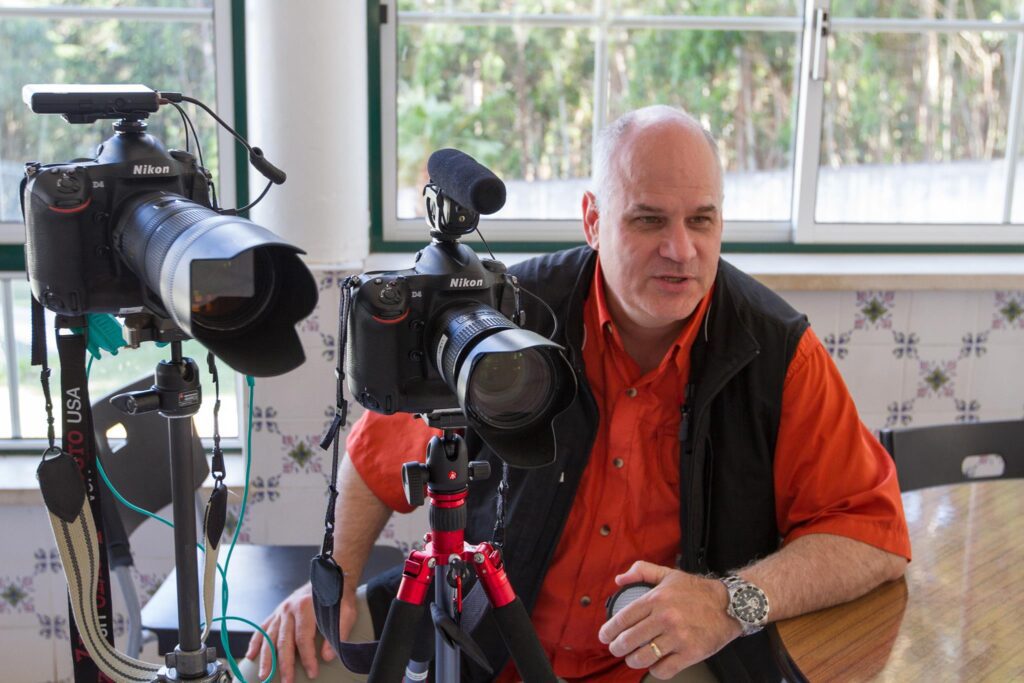
One of the best things you can do is to record yourself using video. This will let you hear your tone and see your body language. It is awkward to do but is one of the best ways to correct your behaviors.
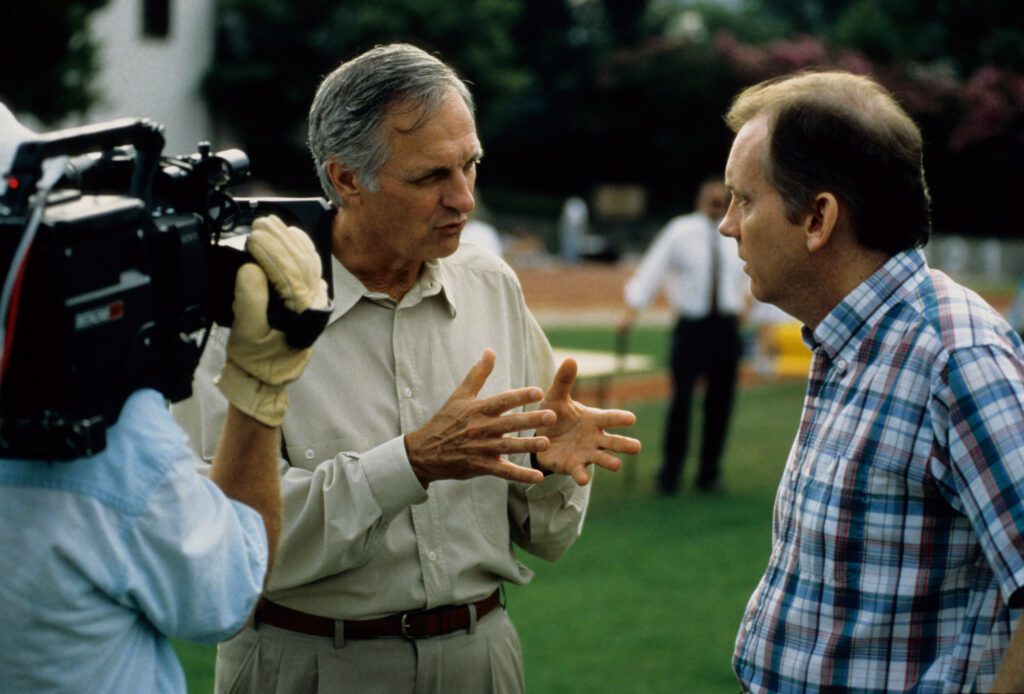
I was privileged to spend a few days photographing Alan Alda in July 1995 while he was filming his show on the Georgia Tech campus. The Aerial Robotics Competition was before GPS would be used as we do today with drones.
What fascinated me all week was watching Alan Alda ask questions off camera and then realize he needed that comment for the TV show. He then asked the film crew to capture him, questioning the expert. What was wild is Alan Alda asked that question with the exact words, tone, and body language than helped him elicit the same response.
He did this over and over again. He also knew where I was standing, and the people next to him asked which lens I was using. Then he helped put the people around him in a better position than I could have ever instructed him to do. Why could he do this? Well, he was not just an actor but a director.
Time to Evaluate
In business, you need to hone your presentations to clients. It would help if you also listened to them as well as yourself. You don’t want a canned speech that cannot be altered to the situation.
Have you taken the time to evaluate yourself and know what you might have done wrong and how to correct it in the future??
That is the point of this blog. Here are a few tips that can help you.
First, ask your friends to tell you how you come across and what you could do to improve. Good friends will want to help you improve.
Try recording yourself doing your pitch with someone. Encourage them to ask questions or do whatever to see if you can meet the challenge of picking the right words, using the best tone, and helping you with your body language.
Watch it with them. Get others’ feedback.

